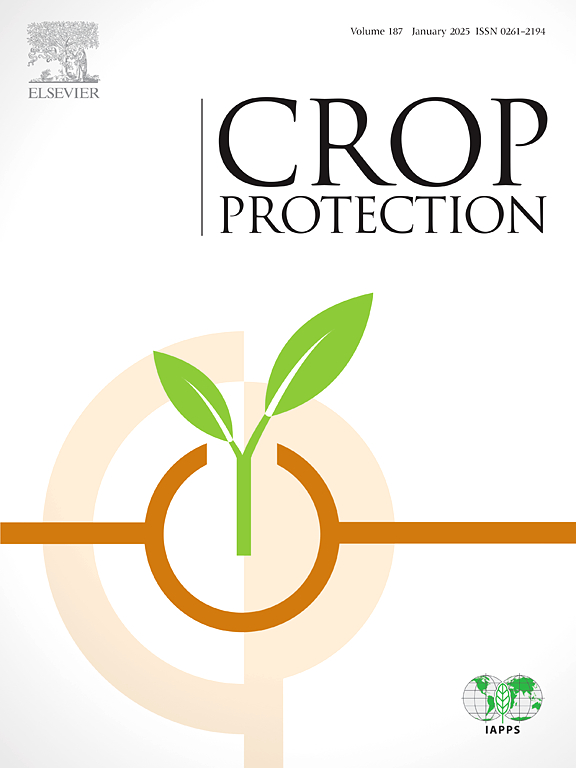Effects of temperature on the adaptation of Myzus persicae (Sulzer) (Hemiptera: Aphididae) to tobacco plants infected with potato virus Y
IF 2.5
2区 农林科学
Q1 AGRONOMY
引用次数: 0
Abstract
Temperature is a key factor that influences interactions among vector insects, viruses, and host plants. A deep understanding of how temperature affects the adaptability of aphids to virus-infected plants can provide valuable insights for improving control strategies against plant viral diseases. Herein, we evaluated the adaptability of the green peach aphid Myzus persicae to tobacco plants infected by Potato virus Y (PVY) across four temperatures using dual-choice bioassays, electropenetrography, and an age-stage, two-sex life table. The results revealed substantial differences in the adaptation of M. persicae to PVY-infected tobacco at different temperatures. The number of M. persicae selecting PVY-infected tobacco plants rapidly peaked as temperature increased, though an inverse trend occurred when temperatures surpassed 25 °C. At 30 °C, M. persicae showed reduced feeding ability, a considerably short duration of potential drop (pd) waves, and an increased pd frequency on PVY-infected plants. In addition, at 30 °C, M. persicae exhibited the shortest developmental duration, reduced total lifespan, and low fecundity, leading to negative population growth. This study aims to provide initial insights into how temperature stress affects M. persicae on PVY-infected plants, delivering useful information for disrupting vector-mediated transmission routes and controlling the spread of insect-borne viral diseases through targeted environmental interventions.
求助全文
约1分钟内获得全文
求助全文
来源期刊

Crop Protection
农林科学-农艺学
CiteScore
6.10
自引率
3.60%
发文量
200
审稿时长
29 days
期刊介绍:
The Editors of Crop Protection especially welcome papers describing an interdisciplinary approach showing how different control strategies can be integrated into practical pest management programs, covering high and low input agricultural systems worldwide. Crop Protection particularly emphasizes the practical aspects of control in the field and for protected crops, and includes work which may lead in the near future to more effective control. The journal does not duplicate the many existing excellent biological science journals, which deal mainly with the more fundamental aspects of plant pathology, applied zoology and weed science. Crop Protection covers all practical aspects of pest, disease and weed control, including the following topics:
-Abiotic damage-
Agronomic control methods-
Assessment of pest and disease damage-
Molecular methods for the detection and assessment of pests and diseases-
Biological control-
Biorational pesticides-
Control of animal pests of world crops-
Control of diseases of crop plants caused by microorganisms-
Control of weeds and integrated management-
Economic considerations-
Effects of plant growth regulators-
Environmental benefits of reduced pesticide use-
Environmental effects of pesticides-
Epidemiology of pests and diseases in relation to control-
GM Crops, and genetic engineering applications-
Importance and control of postharvest crop losses-
Integrated control-
Interrelationships and compatibility among different control strategies-
Invasive species as they relate to implications for crop protection-
Pesticide application methods-
Pest management-
Phytobiomes for pest and disease control-
Resistance management-
Sampling and monitoring schemes for diseases, nematodes, pests and weeds.
 求助内容:
求助内容: 应助结果提醒方式:
应助结果提醒方式:


